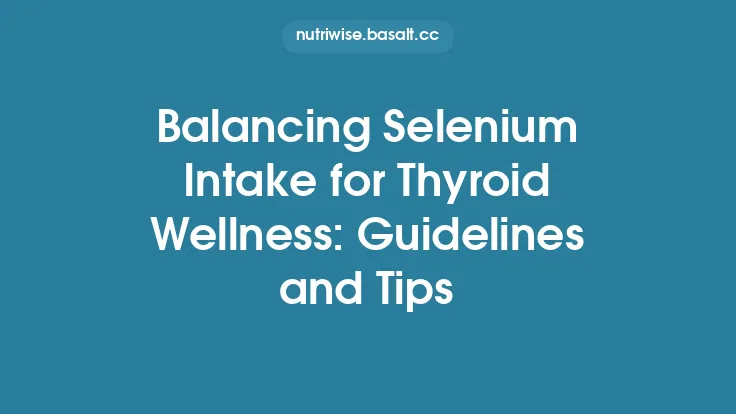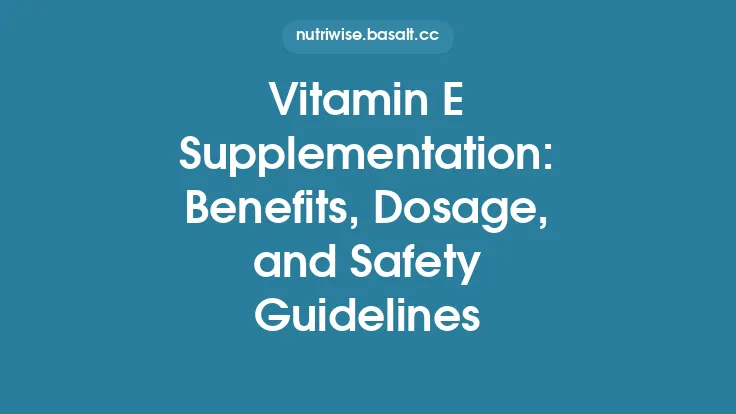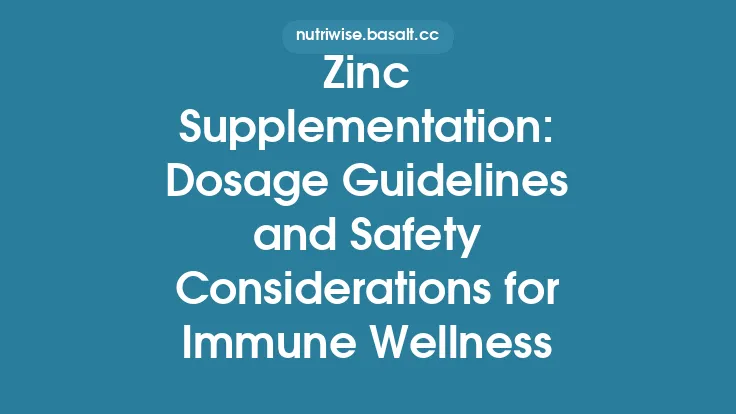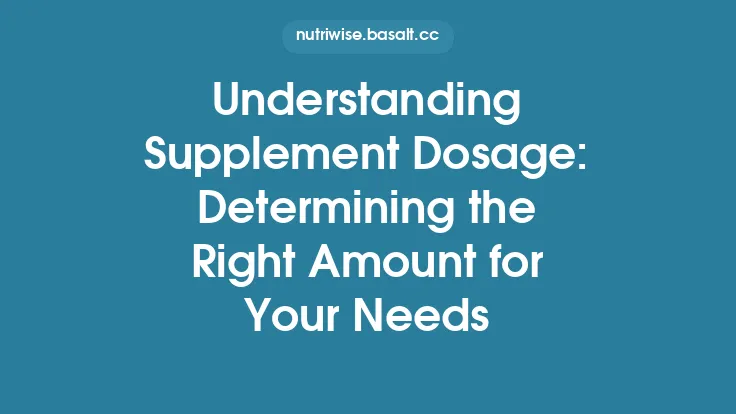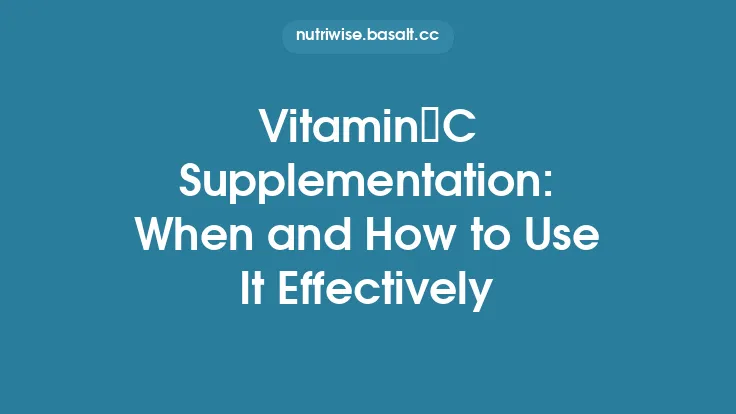Selenium is an essential trace element that plays a pivotal role in antioxidant defense, thyroid hormone metabolism, and immune function. Because of its involvement in redox reactions, many patients wonder whether taking selenium supplements might influence the effectiveness or safety of anticoagulant therapy. This article provides a comprehensive, evergreen overview of the science behind selenium‑anticoagulant interactions, practical safety tips for patients and clinicians, and evidence‑based guidance for integrating selenium into a regimen that includes warfarin, direct oral anticoagulants (DOACs), or injectable agents such as heparin.
Understanding the Pharmacology of Common Anticoagulants
Warfarin (Vitamin K antagonist)
Warfarin inhibits the vitamin K‑dependent γ‑carboxylation of clotting factors II, VII, IX, and X. Its anticoagulant effect is monitored by the international normalized ratio (INR), which must be kept within a therapeutic window (typically 2.0–3.0 for most indications). Warfarin’s activity is highly sensitive to changes in hepatic metabolism, protein binding, and dietary factors that affect vitamin K status.
Direct Oral Anticoagulants (DOACs)
DOACs—apixaban, rivaroxaban, edoxaban (factor Xa inhibitors) and dabigatran (direct thrombin inhibitor)—target specific steps in the coagulation cascade. They have predictable pharmacokinetics, do not require routine INR monitoring, and are less prone to dietary interactions than warfarin. Nevertheless, they are substrates for cytochrome P450 enzymes (especially CYP3A4) and transport proteins such as P‑glycoprotein (P‑gp), making them vulnerable to drug‑nutrient interactions that alter absorption or clearance.
Heparin and Low‑Molecular‑Weight Heparins (LMWHs)
Unfractionated heparin and LMWHs (e.g., enoxaparin) act by potentiating antithrombin III, thereby inhibiting thrombin and factor Xa. Their activity is monitored by activated partial thromboplastin time (aPTT) for unfractionated heparin or anti‑Xa levels for LMWHs. Because they are administered parenterally, oral nutrient interactions are generally minimal, but systemic oxidative stress can still influence overall coagulation balance.
Selenium’s Biological Functions Relevant to Coagulation
- Antioxidant Enzyme Cofactor
Selenium is incorporated into the active sites of glutathione peroxidases (GPx) and thioredoxin reductases. By reducing hydrogen peroxide and lipid hydroperoxides, selenium helps maintain endothelial integrity and limits oxidative activation of platelets.
- Modulation of Inflammatory Pathways
Selenoproteins can down‑regulate NF‑κB signaling, thereby attenuating the production of pro‑inflammatory cytokines (e.g., IL‑6, TNF‑α) that are known to promote a pro‑thrombotic state.
- Thyroid Hormone Metabolism
Iodothyronine deiodinases, which convert T4 to the active T3, are selenium‑dependent. Thyroid hormones influence coagulation factor synthesis; hyper‑ or hypothyroidism can shift clotting balance, indirectly affecting anticoagulant dosing.
- Platelet Function
Experimental data suggest that high selenium concentrations can inhibit platelet aggregation in vitro, though the clinical relevance at typical supplemental doses remains uncertain.
Potential Mechanisms of Interaction Between Selenium and Anticoagulants
| Mechanism | Relevance to Warfarin | Relevance to DOACs | Clinical Significance |
|---|---|---|---|
| Altered Hepatic Enzyme Activity | Selenium can modulate CYP450 expression (especially CYP3A4) in animal models. If up‑regulated, warfarin clearance may increase, lowering INR. | DOACs such as apixaban and rivaroxaban are CYP3A4 substrates; enhanced metabolism could reduce drug exposure. | Evidence is limited; most human studies show negligible effect at standard supplement doses (≤200 µg/day). |
| Changes in Protein Binding | Warfarin is ~99 % protein‑bound. Selenium‑binding proteins could theoretically compete for binding sites, modestly increasing free warfarin. | DOACs are also highly protein‑bound (≈90 %). Similar competition is possible but not well documented. | Clinical impact appears minimal; routine monitoring is still recommended when any new supplement is introduced. |
| Antioxidant‑Mediated Platelet Inhibition | By reducing oxidative platelet activation, selenium may synergize with anticoagulants, potentially increasing bleeding risk. | DOACs already provide direct inhibition of clotting factors; additive platelet effects could tip the balance toward bleeding. | Most case reports involve supratherapeutic selenium (≥400 µg/day) or intravenous selenium therapy. |
| Thyroid Hormone Modulation | Shifts in thyroid status can affect synthesis of clotting factors, indirectly influencing warfarin dose requirements. | Similar indirect effects may occur with DOACs, though they are less dependent on factor levels. | Monitoring thyroid function is advisable when initiating high‑dose selenium, especially in patients with known thyroid disease. |
Overall, the bulk of pharmacokinetic data suggest that routine selenium supplementation (≤200 µg/day) does not produce clinically meaningful alterations in anticoagulant effect. However, individual variability—particularly in patients with liver disease, polymorphisms in CYP enzymes, or concurrent use of other interacting agents—warrants a cautious approach.
Evidence Summary: Clinical Trials and Observational Studies
| Study Design | Population | Selenium Dose | Anticoagulant(s) | Main Findings |
|---|---|---|---|---|
| Randomized, double‑blind, placebo‑controlled (n=112) | Adults on stable warfarin for atrial fibrillation | 100 µg/day (organic selenomethionine) for 12 weeks | Warfarin (target INR 2–3) | No significant change in mean INR or time‑in‑therapeutic range (TTR). Minor, non‑significant trend toward lower INR in the selenium group. |
| Prospective cohort (n=2,340) | Patients initiating DOAC therapy (apixaban or rivaroxaban) | Self‑reported selenium supplement use (average 150 µg/day) | Apixaban, rivaroxaban | Incidence of major bleeding was comparable between supplement users and non‑users after adjustment for age, renal function, and concomitant antiplatelet drugs. |
| Case series (n=5) | Hospitalized patients receiving high‑dose intravenous selenium (1 mg/day) for sepsis | 1 mg/day IV for ≤7 days | Unfractionated heparin | Two patients experienced transiently elevated aPTT; all returned to baseline after selenium discontinuation. |
| In‑vitro enzyme assay | Human liver microsomes | Selenium (as selenite) 0–500 µM | Warfarin metabolism (CYP2C9) | No dose‑dependent inhibition or induction observed up to 200 µM; slight induction at 500 µM (non‑physiological). |
The consensus from these data is that standard oral selenium supplementation is unlikely to cause clinically relevant anticoagulant interactions, but high‑dose or parenteral selenium may warrant closer observation.
Practical Safety Tips for Patients
- Confirm the Form and Dose
- Organic forms (selenium‑methionine, selenium‑seleno‑cysteine) have higher bioavailability and are the most commonly used in over‑the‑counter supplements.
- Inorganic forms (sodium selenite, sodium selenate) are less bioavailable and have been associated with a higher risk of toxicity at equivalent doses.
- Stick to ≤200 µg/day unless a clinician specifically recommends a higher therapeutic dose (e.g., for certain thyroid conditions).
- Timing Relative to Anticoagulant Dosing
- Take selenium with food to improve absorption and reduce gastrointestinal irritation.
- For warfarin, maintain a consistent daily schedule for both the medication and the supplement to avoid day‑to‑day fluctuations in INR.
- Monitor Laboratory Parameters
- Warfarin users: Check INR more frequently (e.g., weekly for the first 2–3 weeks) after starting or changing selenium dose.
- DOAC users: Routine coagulation labs are not required, but consider a baseline complete blood count (CBC) and renal function test; repeat if clinical signs of bleeding appear.
- All patients: Periodic measurement of serum selenium (especially if taking >200 µg/day) can help avoid chronic excess (>150 µg/L is generally considered high).
- Watch for Signs of Over‑Supplementation
- Early symptoms of selenium toxicity include garlic‑odor breath, gastrointestinal upset, hair loss, and nail brittleness.
- Severe toxicity can lead to selenosis, characterized by neurological abnormalities and respiratory distress. Prompt discontinuation and medical evaluation are essential.
- Consider Drug‑Drug‑Nutrient Interactions
- If you are also taking statins, antifungals (e.g., ketoconazole), or certain antibiotics (e.g., macrolides), these agents can affect CYP3A4 activity and may indirectly influence DOAC levels. Discuss any multi‑supplement regimen with your prescriber.
- Communicate with Your Healthcare Team
- Provide a complete list of all supplements, including brand names and dosages, at each clinic visit.
- Ask whether your specific anticoagulant has any known interaction with selenium; most clinicians will appreciate the proactive approach.
Guidance for Clinicians
| Action | Rationale |
|---|---|
| Obtain a detailed supplement history | Many patients view supplements as “natural” and may not disclose them unless asked. |
| Assess baseline selenium status | Serum selenium or selenoprotein P can identify deficiency (common in certain geographic regions) or excess. |
| Start low, go slow | If supplementation is indicated (e.g., for selenium deficiency, Hashimoto’s thyroiditis), begin with 50–100 µg/day and titrate based on labs and clinical response. |
| Schedule follow‑up INR checks | For warfarin patients, a repeat INR 3–7 days after initiating selenium helps detect any shift in anticoagulation intensity. |
| Educate about signs of bleeding | Emphasize early detection of bruising, hematuria, melena, or prolonged bleeding from minor cuts. |
| Document any dose changes | Electronic health records should capture supplement adjustments to aid future medication reconciliation. |
| Consider drug interaction checkers | Many pharmacy software platforms now include micronutrient modules; use them to flag potential CYP or P‑gp interactions. |
| Tailor advice for special populations | Elderly patients, those with chronic kidney disease, or individuals on polypharmacy regimens are more vulnerable to subtle shifts in anticoagulant effect. |
Special Populations and Situational Considerations
- Pregnant and Lactating Women
Selenium requirements increase modestly during pregnancy (≈60 µg/day). However, anticoagulant therapy (often low‑molecular‑weight heparin) is the preferred option in this group. If a selenium supplement is deemed necessary, keep the dose within the recommended dietary allowance (RDA) and monitor maternal serum levels.
- Patients with Chronic Liver Disease
Impaired hepatic metabolism can amplify any selenium‑induced changes in CYP activity. Warfarin dosing is already challenging in cirrhosis; therefore, any new supplement should be introduced only after multidisciplinary review.
- Renal Impairment
While selenium is primarily excreted via the kidneys, modest reductions in clearance are usually compensated by homeostatic mechanisms. Nonetheless, patients on DOACs with reduced renal function (e.g., creatinine clearance <30 mL/min) should have their anticoagulant dose adjusted per prescribing information, and selenium supplementation should not exceed the RDA.
- Thyroid Disorders
Because selenium influences deiodinase activity, patients with uncontrolled hyper‑ or hypothyroidism may experience fluctuations in clotting factor synthesis. Regular thyroid function tests (TSH, free T4) are advisable when high‑dose selenium is used.
Frequently Asked Questions (FAQ)
Q1: Can selenium replace vitamin K antagonists in patients with clotting disorders?
A1: No. Selenium’s anticoagulant‑like effects are modest and indirect. It cannot substitute for prescribed anticoagulants and should never be used as a primary therapy for thrombosis prevention.
Q2: I take a daily multivitamin that contains 55 µg of selenium. Do I need to worry about interactions?
A2: At this low dose, the risk of interaction with warfarin or DOACs is negligible. Continue routine INR monitoring (if on warfarin) as usual.
Q3: My doctor suggested a high‑dose selenium protocol for autoimmune thyroiditis. I’m also on apixaban. What should I do?
A3: Discuss the plan with both your endocrinologist and prescribing physician. Consider a trial of a lower dose (e.g., 100 µg/day) with close clinical observation and, if on warfarin, more frequent INR checks. For apixaban, monitor for any new bruising or bleeding and report promptly.
Q4: Are there any foods that provide enough selenium to avoid supplementation?
A4: Yes. Brazil nuts are the richest natural source (≈68–91 µg per nut). Other sources include seafood (tuna, sardines, shrimp), organ meats, and whole grains. A balanced diet typically supplies the RDA (55 µg for adults) without the need for supplemental tablets.
Q5: I heard selenium can cause hair loss. Is this true?
A5: Hair loss is more commonly associated with selenium deficiency rather than excess. However, chronic intake above the tolerable upper intake level (UL) of 400 µg/day can lead to selenosis, which may manifest with hair loss among other symptoms.
Bottom Line
- Standard oral selenium supplementation (≤200 µg/day) is generally safe for patients on warfarin, DOACs, or heparin, provided that clinicians and patients maintain open communication and appropriate laboratory monitoring.
- High‑dose or intravenous selenium may modestly affect coagulation parameters and should be used only under specialist supervision.
- Individual factors—such as liver or kidney disease, thyroid dysfunction, and concurrent use of CYP‑modulating drugs—can amplify potential interactions and merit a personalized approach.
- Consistent dosing, routine INR checks (for warfarin), and vigilance for bleeding or toxicity signs are the cornerstone of safe selenium‑anticoagulant co‑management.
By integrating these evidence‑based safety tips into everyday practice, patients can reap the antioxidant and thyroid‑supporting benefits of selenium without compromising the efficacy of their anticoagulant therapy.
